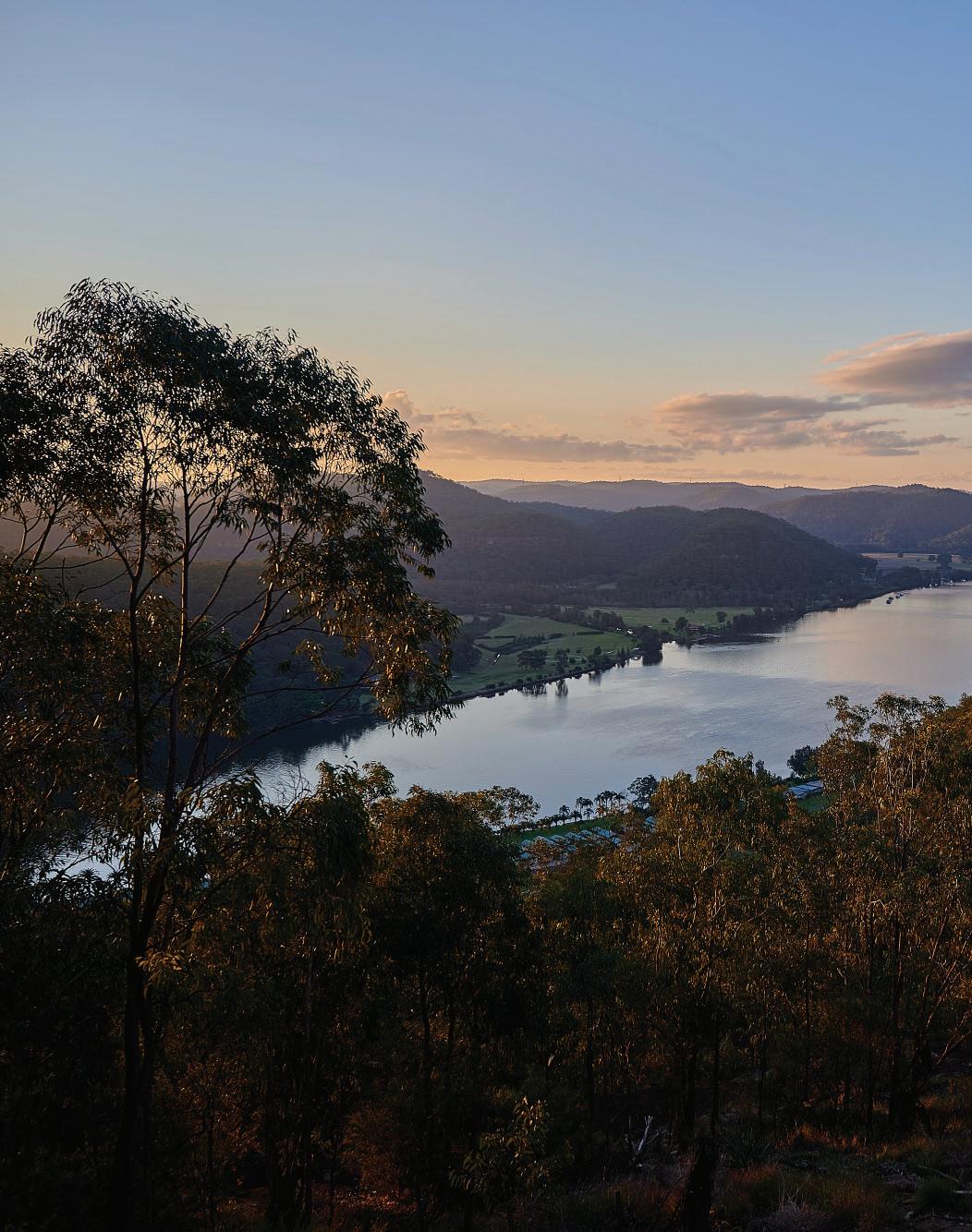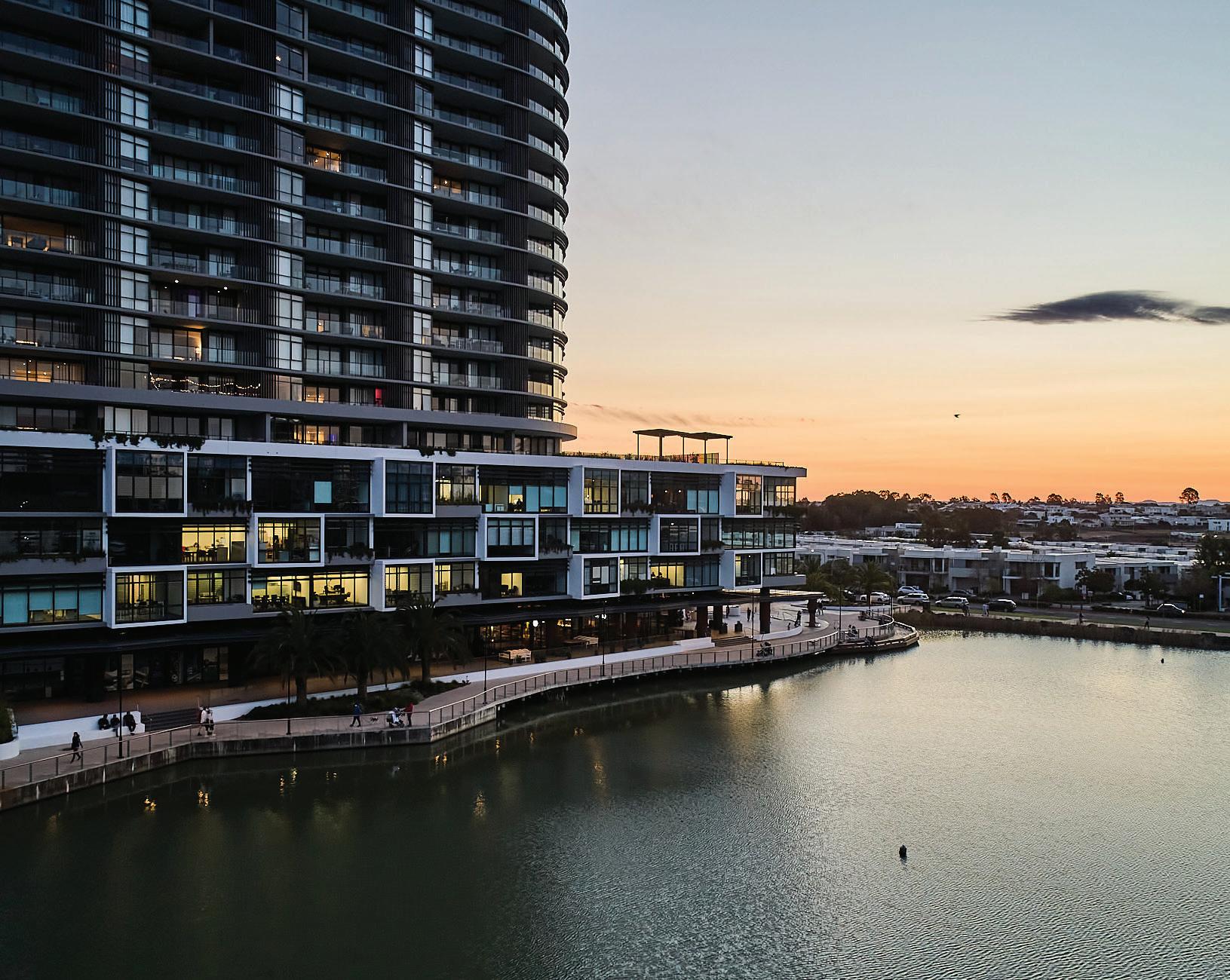THE HILLS SHIRE COUNCIL
COMMUNITY PARTICIPATION PLAN





























ACKNOWLEDGEMENT OF COUNTRY
We acknowledge the Dharug people as the original custodians of the land on which The Hills Shire is located and where we conduct our business. We pay our respects to Elders, past and present.

APRIL 2024
The Community Participation Plan was adopted by Council on 9 April 2024, Minute No. 136.
DISCLAIMER
Every reasonable effort has been made to ensure that this document is correct at the time of printing. The Hills Shire Council disclaims all liability in respect of the consequences of anything done or omitted.
COPYRIGHT NOTICE
This document represents the collaboration of information from a number of sources, including Government plans and policies, and plans and policies of The Hills Shire Council in addition to on-site investigations. This document may be reproduced for personal, in-house or non-commercial use. Reproduction of this document for any other purpose shall only be permitted with the written permission of The Hills Shire Council.
Participation Plan COMMUNITY
We recognise that our community has the right to participate and be engaged in making decisions that affect their future. This document outlines our approach to engaging with the community about our overarching long-term aims and encouraging participation in the planning system. It is acknowledged that council plays an important and visible role in the planning system.
Council’s Community Participation Plan (CPP) outlines when and how the community can expect to participate in planning matters that affect them. Community participation helps build confidence in the planning system as well as understanding within the community of the need to responsibly manage growth and change while seeking to preserve valued and unique aspects of The Shire. The CPP will be reviewed periodically as required.
Council’s Community Participation (CPP) is required under Division 2.6 and Schedule 1 of the Environmental Planning and Assessment Act 1979 (the EP&A Act). It recognises the prominence of
What is the Community Participation Plan?
planning matters within the functions of Council and that the community should be informed and able to participate in the planning system. Notification and advertisement procedures from The Hills Development Control Plan (DCP) have been incorporated into the CPP.
The CPP should be read in conjunction with Council’s Communication Protocol for the Development Application Process, available on Council’s website.
Council’s Community Engagement Strategy is a separate document that guides how council listens to and generally engages with the community. This Community Participation Plan seeks to build on the Community Engagement Strategy by providing specific guidance about how council will engage with the community on land use planning matters. In the event of an inconsistency, this Plan prevails where the matter relates to engagement about council’s land use planning functions.
The Hills Shire Community Participation Plan applies to plan making and development assessment matters within The Hills Local Government Area. These include applications and proposals that need to be assessed and determined by council as well as planning matters within the Shire that need to be assessed and determined by local, district or regional planning panels.
The CPP will provide the community with certainty over the level of engagement for particular types of development and planning projects. It will ensure transparency and accountability on planning and development decisions through an appropriate and consistent engagement method and timeframe.
Planning matters within The Hills Shire that fall under the responsibility of other planning authorities (such as State Significant Development Applications assessed by the NSW State Government) are subject to the relevant Community Participation Plan prepared by that authority.
3 THE HILLS SHIRE COUNCIL | COMMUNITY PARTICIPATION PLAN
FUNCTIONS TO WHICH THE CPP APPLIES
Strategic Planning and Plan Making
Strategic planning projects such as:
• Precinct Plans
• Changes to council’s Local Environmental Plan (LEP)
• Changes to council’s Development Control Plan (DCP)
• Contributions Plans
• Plans for Urban Renewal Areas
• Public Domain Strategies and Plans
• Local Strategies
AssessmentsAssessments such as:
• Development Applications (including Subdivision Applications)
• Planning Proposals
• Planning Agreements
THE HILLS SHIRE COUNCIL | COMMUNITY PARTICIPATION PLAN 4
Community Strategic Plan Community Engagement Framework All Council Functions Community Participation Plans Planning Functions Local Strategic Planning Statement Local Environmental Plan Development Control Plan Contributions Plans Planning Agreements Local Government Act 1993 Environmental Planning & Assessment Act 1979
FIGURE 1. COUNCIL’S ENGAGEMENT FRAMEWORK
Direction
VISION & COMMUNITY VISION
Community participation will be guided by the following vision and strategic directions:

Building a Vibrant Community and Prosperous Economy through Proactive Leadership, Shaping Growth, Delivering and Maintaining Infrastructure and Valuing our Surroundings.

COMMUNITY PARTICIPATION PRINCIPLES






















5 THE HILLS SHIRE COUNCIL | COMMUNITY PARTICIPATION PLAN
COMMUNITY PARTICIPATION IS RELEVANT TIMELY OPEN & INCLUSIVE EASY MEANINGFUL RELEV E CO R TIM O I Y O

We will monitor our engagement approach so we can:

• Develop better community participation programs.
• Ensure we are using the most appropriate methods of engagement.
• Evaluate the effectiveness of our programs.
THE HILLS SHIRE COUNCIL | COMMUNITY PARTICIPATION PLAN 6
The following table outlines community participation principles and objectives (in accordance with the Environmental Planning and Assessment Act 1979, as well as council’s engagement principles and practices):
COMMUNITY PARTICIPATION IS ...
Relevant
COUNCIL WILL:EXAMPLES:
• Tailor engagement activities to match the context, scale and nature of the project, as well as the level of community interest
Timely
Open and Inclusive
Easy
• Ensure you have adequate time to provide input
• Fulfil minimum exhibition requirements
• Extend exhibition timeframes where appropriate (considering scale, nature and level of community interest)
• Purposefully engage with a wide range of stakeholders
• Make it safe to participate so people feel confident to provide input
• Ensure relevant views are accurately captured
• Let you know how, where and when you can participate
• Make the purpose of the engagement clear and concise
• Prepare information for the community that is easy to understand
• Seek input from groups that may find it difficult to participate
• Use visual aids where appropriate
Meaningful
• Provide a range of opportunities for meaningful participation
• Consider your feedback
• Monitor and report back to the community on planning decisions
• Targeted social media information campaigns
• Use qualitative and quantitative methods to collect and review findings
• Community members can choose to receive e-news updates regarding planning and development matters
• Community is aware of engagement opportunities when exhibition periods begin (via media releases, website updates, newsletters, social media posts etc.)
• Feedback on planning decisions is provided within a period appropriate to the scale and nature of the project
• Information events are held at accessible venues
• A variety of engagement methods are used that appeal to different audiences, tailored to the needs of the projects
• Information is easy to access such as on council’s website
• Opportunities for participation are widely advertised (online, direct mail notification, public notices, social media platforms, media releases)
• Offer a range of methods to submit feedback (online forms or surveys, post, face-to-face)
• Inclusion of maps, diagrams or imagery wherever possible to make it easy to understand and visualise a project
• Publication of post-exhibition reports for Planning Proposals
• Summarise issues raised in submissions in reports
• We may amend part of a plan as a result of feedback
• Notices of determination issued to submission authors
*Note: The engagement methods indicated above just present potential examples that could be considered. It does not bind Council to implement all the methods for every engagement session, as the requirements would be different for each application.
7 THE HILLS SHIRE COUNCIL | COMMUNITY PARTICIPATION PLAN

THE HILLS SHIRE COUNCIL | COMMUNITY PARTICIPATION PLAN 8
Participation Approach
Usually planning matters fall predominantly within the ‘inform’ and ‘consult’ engagement levels. However, we will adjust these approaches to suit the scale and nature of individual proposals, and the level of community interest.
WHATWHENEXAMPLES
Inform
We will tell you about plans/proposals and give you accurate and relevant information as they progress
Consult
We will keep you informed, listen to and acknowledge your concerns and aspirations, and provide feedback on how your input influenced the decision
Determination
We will let you know the decisions regarding proposals and how your views were considered in reaching the decision
• As soon as practical following their lodgement, with updates at key milestones accurately captured
• Draft plans/proposals will be exhibited and you may have your say on the draft plans/proposals
• Online Application Tracker
• Media releases
• Social media posts
• Planning E-news
• Notification letters
• Public Exhibition
• Drop-in Sessions
• Information Hubs
• Public Hearings
• Workshops
• Online surveys
• As soon as practical following a decision
• Online updates
• Letters to submission authors
• Post-exhibition reports to Council
• Outcomes of decision published on website
*Note: The engagement methods indicated above just present potential examples that could be considered. It does not bind Council to implement all the methods for every engagement session, as the requirements would be different for each application or plan/proposal
9 THE HILLS SHIRE COUNCIL | COMMUNITY PARTICIPATION PLAN
COMMUNITY

THE HILLS SHIRE COUNCIL | COMMUNITY PARTICIPATION PLAN 10
Exhibitions
What are exhibitions?
Exhibitions communicate information about plans or proposals and formally collect feedback about them. They typically include draft plans or proposals, and at times draft strategic documents such as contributions plans or local strategies. Exhibitions are a valuable way of ensuring all relevant information about specific proposals is available to the community at the same time, and that everyone has an opportunity to give feedback.
How can you get involved during an exhibition period?
There are a number of ways to get involved:
• Make a formal submission by going to council’s ‘Have Your Say’ webpage.
• Write to the mayor or general manager.
• Visit council’s customer service centre, website or libraries to access public exhibition documents.
• Attend drop-in sessions (if they are scheduled) to discuss the plans/proposal with council officers.
• Contact a council officer should you require further information or assistance.
Who can make a submission?
Any person may lodge a submission supporting, opposing or commenting on a plan or proposal. Council is particularly interested in receiving submissions from persons who feel that they may be affected by a plan or proposal. The degree to which the submission may impact on the determination of the proposal will depend on a range of matters including the content and relevance of the submission.
What do we do with your submission?
When you provide us with a submission about a plan or proposal, we consider your feedback in conjunction with any other submissions. Council has the responsibility to consider all community feedback when making decisions that are in the public interest. These decisions seek to balance the objects of the Environmental Planning and Assessment Act 1979, strategic priorities of council and land use priorities within council’s strategic plans and applicable state policies.
If you make a submission on council’s website through the online forms, you will receive a receipt email. Any person may contact the council officer who is responsible for the planning matter regarding the progress of their submission.
Submissions on proposals are addressed collectively within reporting so you will not receive an individual response to your submission. However, council officers will summarise the issues raised within submissions and address these within reports on the outcomes of proposals. For matters determined by council, the elected council will also be provided with a copy of any submissions prior to making a decision at council meetings. If contact details are provided, you will be advised of the matter being reported to council and of the outcome.
11 THE HILLS SHIRE COUNCIL | COMMUNITY PARTICIPATION PLAN

THE HILLS SHIRE COUNCIL | COMMUNITY PARTICIPATION PLAN 12
Community Drop-In Session at Rouse Hill Town Centre
Timeframes EXHIBITION
Exhibition timeframes vary for different types of proposals. The Environmental Planning and Assessment Act 1979 sets minimum timeframes for the exhibition of different types of proposals. Council will always exhibit a proposal for minimum timeframes, and where the scale and nature of a proposal warrants, we may extend the period to allow the community enough time to consider the proposal.
PLAN MAKING MANDATORY EXHIBITION TIMEFRAMES*
Draft Community Participation Plans
Draft Local Strategic Planning Statement
Planning Proposals for Local Environmental Plans subject to a Gateway Determination
Draft Development Control Plans
Draft Contributions Plans
Draft Planning Agreements
• 28 days
• 28 days
• 28 days (or as specified by the Gateway Determination)
• 28 days
• 28 days
• 28 days
DEVELOPMENT ASSESSMENT MANDATORY EXHIBITION TIMEFRAMES*
Application for development consent for Local Development
Application for development consent for Designated Development
Application for modification of development consent that is required to be publicly exhibited
Integrated Development or Threatened Species Development
Application for development consent for Category 1 Remediation Work
Environmental Impact Statement (EIS) obtained under Division 5.1 of the EP&A Act
Council Related Development Application
NON-MANDATORY TIMEFRAMES*
Draft Precinct Plans or Master Plans
Draft Public Domain Plans and Strategies
• 14 days (this can be reduced to 7 days or extended in special circumstances)
• 28 days (or if the modification is minor, no notification may be required)
• 28 days
• 28 days
• 28 days
• 28 days
• 28 days
• 28 days
• 28 days
*Note: If a particular matter has different exhibition/notification period that apply, the longer period applies. Notifications/Exhibitions may occur during the Christmas period between 20 December and 10 January (inclusive). However, the period is excluded from the calculation of minimum timeframes. The exhibition of a new proposal will not commence within this period. In the event of any inconsistencies with council’s separate Community Engagement Strategy, the requirements of this Community Participation Plan will prevail.
13 THE HILLS SHIRE COUNCIL | COMMUNITY PARTICIPATION PLAN
Notification
Procedures
Council advertises and notifies potentially affected members of the community about local applications for development consent. We seek to balance the community’s right to participate in the planning system with the timely processing of low impact development applications.
If you live in an adjoining or adjacent property to a proposed local development, we will notify you or the strata manager in writing when a development is proposed. In cases where we consider the potential impacts of the development to be greater in scale, we may extend the area of notification.
The following factors may be considered when deciding whether to broaden the extent of notification:
• Siting and design
• Views
• Visual and acoustic privacy
• Access
• Overshadowing
• Public interest
• Topography
• Solar access
• Drainage
• Landfill
• Traffic generation
Circumstances Where Notification is Not Required
Some minor development is of a scale and nature that does not require formal notification of neighbouring properties. Provided the proposal complies with all applicable development controls (LEP, DCP and other relevant policies) and it is considered unlikely to detrimentally affect surrounding properties, no formal notification period applies. In these cases, surrounding property owners are sent a courtesy letter to inform them that an application has been received in accordance with the requirements of The Hills Development Control Plan, and that the application will be determined no sooner than 14 days from the date of the letter.
This applies to development such as:
• New rural sheds ancillary to residential use
• New rural fencing
• New tennis courts ancillary to residential use
• Strata subdivisions
• Subdivisions to adjust property boundaries where no additional lots are created
• Where the development site does not adjoin a residential property
Conciliation Conferences
If we receive more than 10 individual submissions relating to a development application during a formal notification period, we will host a conciliation conference. These conferences are chaired by the Mayor or the Mayor’s nominee. If a conciliation conference is required, we will notify all objectors in writing, and invite them to attend and speak at the conference if they wish.
THE HILLS SHIRE COUNCIL | COMMUNITY PARTICIPATION PLAN 14

CONFLICTS OF
Interest
Council is committed to managing conflicts of interest that may arise throughout the development application process. As required under the Environmental Planning and Assessment Act 1979, we have adopted a Conflict of Interest Policy – Council Related Development that specifies how conflicts of interest in connection with council-related development applications will be handled. This is available for viewing on council’s website.
For all council-related development applications we will produce a Management Strategy Statement which explains how council will manage potential conflicts of interest. Furthermore, conflicts of interest in connection with each council-related development application and the measures taken to manage the conflicts will be recorded.
15 THE HILLS SHIRE COUNCIL | COMMUNITY PARTICIPATION PLAN
Norwest Esplanade

Glossary
Community Strategic Plan
Council’s highest-level strategic document that sets a long term vision to ensure we make the best possible use of our resources to provide for the needs of our existing and future communities (required under the NSW Integrated Planning and Reporting Framework).
Contributions Plans
A plan developed by council for the purpose of gaining financial contributions from new development towards the cost of new and upgraded public amenities or services required by the new development.
Designated Development
Development which may have significant environmental impacts and requires additional consideration of such impacts (for example mining developments or chemical industries).
Development Control Plan
A plan that provides detailed planning and design guidelines to support the planning controls in a Local Environmental Plan (LEP).
Environmental Impact Statement (EIS)
An EIS must accompany a development application for state significant development, state significant infrastructure or designated development. It outlines how the proposed development will impact on the environment.
Environmental Planning and Assessment Act 1979 (EP&A Act)
The primary land use planning statute in NSW. It sets out the laws and processes for planning and development in the State, and aims to promote the social, economic and environmental welfare of the community.
Gateway Determination
A gateway determination is issued by the Department of Planning, Housing and Infrastructure following an assessment of the strategic merit of a proposal to amend or create an LEP. It allows the proposal to proceed to public exhibition.
Integrated Development
Development that requires development consent from council as well as at least one approval or licence from another government agency (specified in Part 4 Division 4.8, Section 4.46 of the EP&A Act). This does not include state significant development or complying development.
Local Development
Refers to applications for development consent, that are not complying development or designated development. The majority of applications that councils assess are for local development.
Local Environmental Plan (LEP)
The environmental planning instrument developed by council, which sets the planning framework for our Local Government Area.
Local Strategic Planning Statement (LSPS)
Strategic documents that set out the longterm vision for land use planning in a Local Government Area, in response to broader priorities identified in the District and Regional Plans (required under Part 3 Division 3.1, Section 3.9 of the EP&A Act).
State Significant Development (SSD)
Some types of development have state significance due to their size, economic value or potential impacts. Examples are schools, hospitals or energy generating facilities.
Urban Renewal Areas
Land which is identified for the establishment of vibrant, sustainable and liveable neighbourhoods, including refurbishment of public areas.
17 THE HILLS SHIRE COUNCIL | COMMUNITY PARTICIPATION PLAN
3 Columbia Court Norwest NSW 2153
PO Box 7064, Norwest 2153
Ph: +61 2 9843 0555
Fax: +61 2 9843 0409
Website: www.thehills.nsw.gov.au
Facebook: TheHillsShireCouncil
Twitter: @TheHillsCouncil
YouTube: TheHillsShireCouncil
Instagram: thesydneyhills
THE HILLS SHIRE COUNCIL | COMMUNITY PARTICIPATION PLAN 18
THE HILLS SHIRE COUNCIL


























































